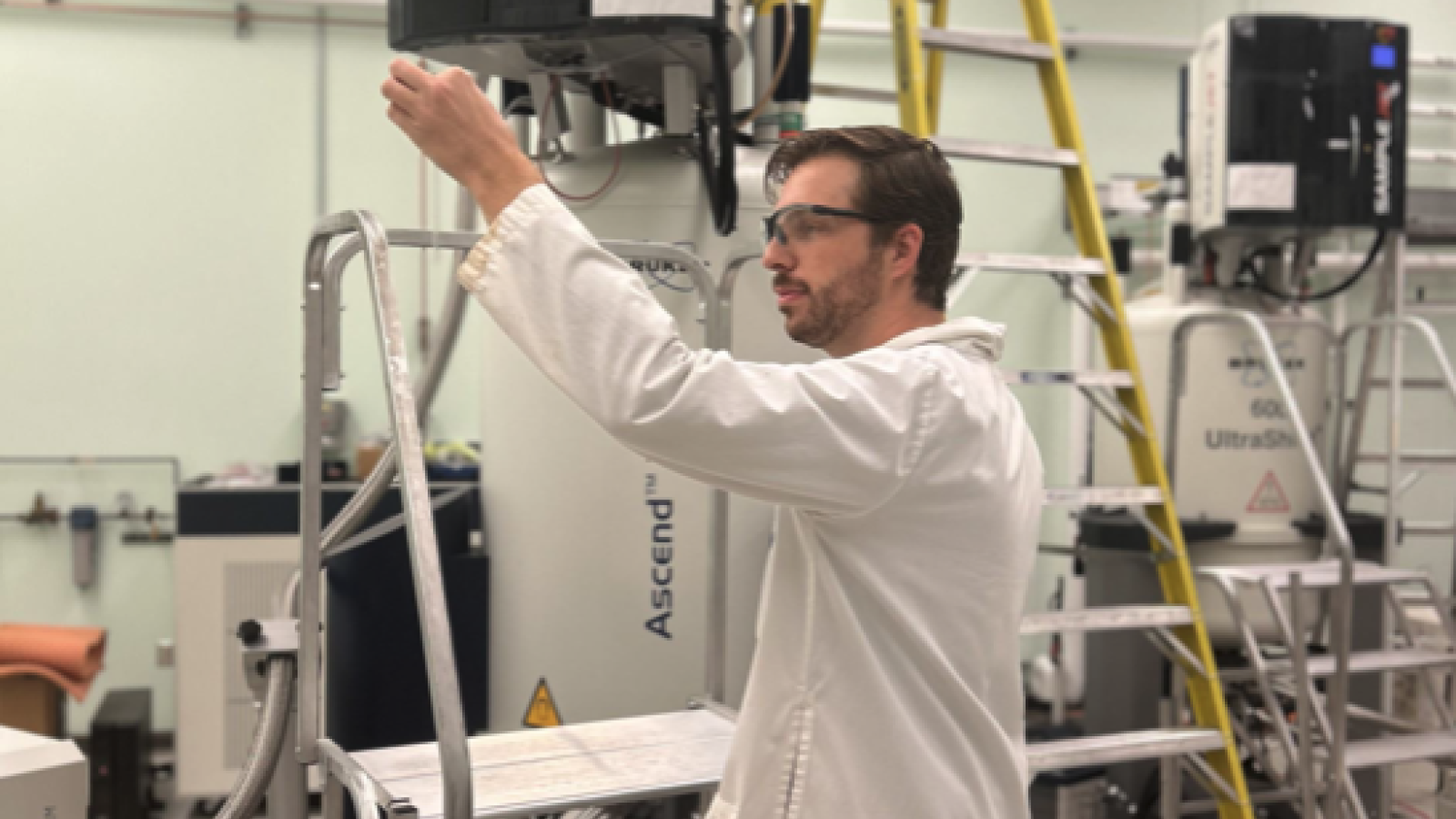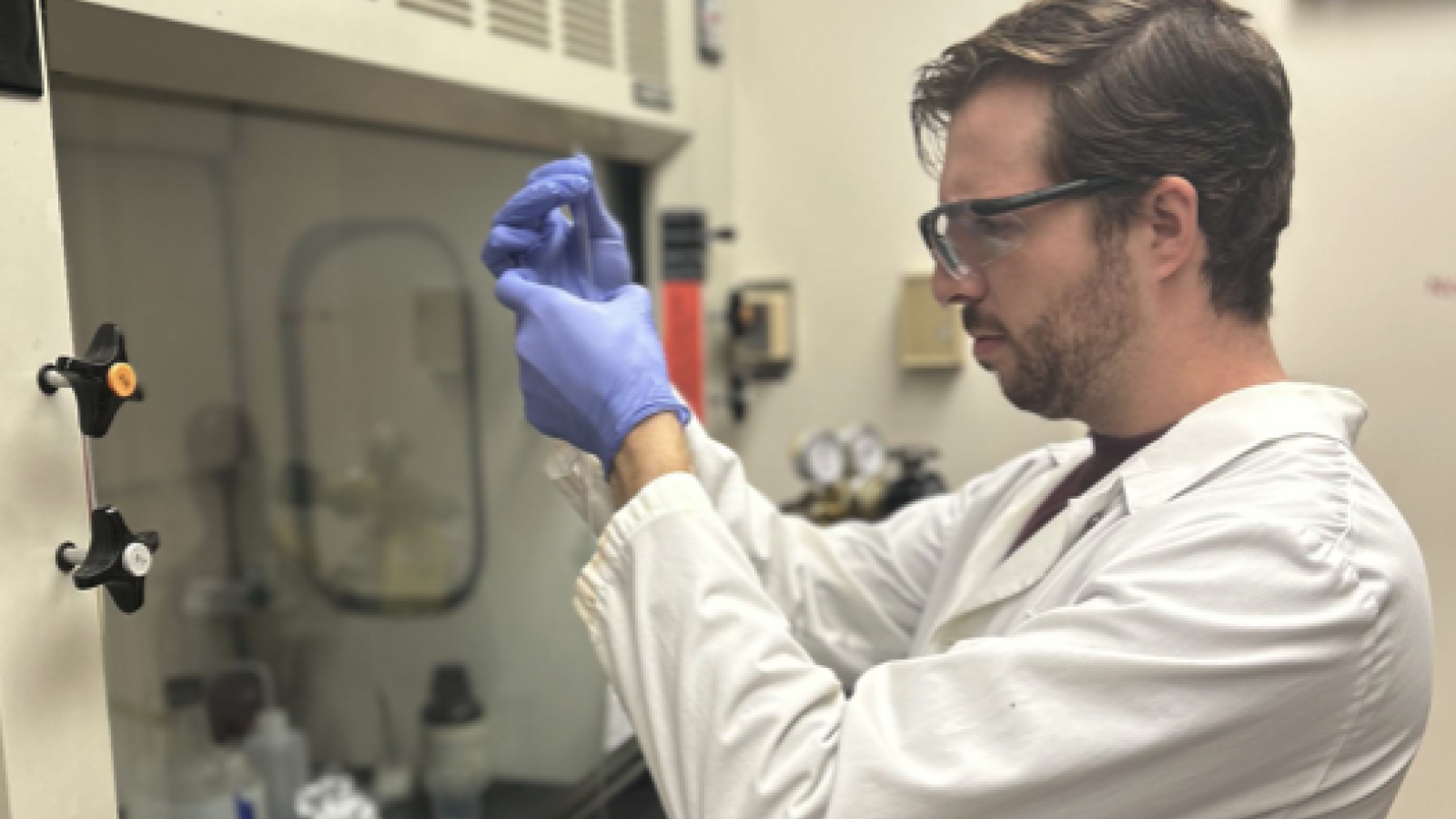CRB Trainee Spotlight
CRB Trainee Spotlight: Jonathan Montgomery (Foster lab)
Written by Andrew Savidge (Nakanishi lab)
Jonathan Montgomery is a 5th year Ph.D. student in Mark Foster’s lab and is part of the Ohio
State Biochemistry Program. He is also a recipient of a Molecular Biophysics NIH T32 training
grant fellowship. His research focuses on the dynamics of the Cre protein as it scans along DNA
to bind its target sequence, loxP. Together, these two elements enable assembly for
recombination of DNA at target sequences.
Jonathan was raised in East Liverpool, Ohio, and received his undergraduate degree from Miami
University, where he studied under Dr. Rick Page and developed a strong interest in protein
NMR. Jonathan knew he wanted to further explore this technique during his PhD and was drawn
to OSU for its suite of NMR experts and first-rate facilities. He excitedly mentioned that “NMR
is like a fun puzzle” that keeps his analytical skills sharp. Cre approaches the size limit of NMR,
making it complicated to isolate the NMR signals that change between conformations and bound
states. Even now, he admits the hardest part of his job is interpreting the data. But to Jonathan,
combining each result to develop conclusions is a part of the puzzle-like joy that his science
provides.
When NMR cannot fulfill all of their research goals, Jonathan says, “Mark is very eager to try
alternative approaches if they can answer our questions”. A prime example of this mindset is the
group’s recent expansion into single molecule experiments. Using the relatively new optical
tweezers set-up in the physics department’s NanoSystems Lab, they conducted a set of
experiments to uncover how Cre scans DNA for loxP sites. Jonathan hypothesized that WT Cre
efficiently scans along the DNA, while a mutant that cannot adopt a unique autoinhibited
conformation moves slowly in comparison. Using this new technique, he was able to verify that
the rate of movement across the target DNA was extremely fast for WT Cre compared to the
mutant, supporting his hypothesis. While he laments the extended setup times, the results were
undoubtedly “super cool”.
Cre-lox systems have been traditionally leveraged to make transgenic animal models, though the
rise of CRISPR-Cas technology has shifted the limelight away from the Foster lab’s protein of
choice. However, Jonathan says that CRISPR is not a one-size-fits-all solution to gene editing.
CRISPR-Cas9, for example, uses the error-prone non-homologous end joining pathway to repair
double-strand DNA breaks after mutation. In contrast, Cre-lox forgoes this requirement, and
repairs single-strand breaks with a simple ligation. Jonathan hopes that his work with Cre will
contribute to designer mutants that bind to different sites other than loxP, forging a safer
approach to gene editing.
While research remains the focal point of his time at OSU, Jonathan enjoys his teaching duties
both in and outside of the lab environment. The Foster lab has a strong chain of mentorship that
is fed by a constant stream of dedicated students, and each year he eagerly contributes to their
training. On top of his benchwork, his tenure as a TA for various biochemistry courses has
molded him into a confident and reliable force of knowledge. He welcomes any opportunity to
teach as an avenue for growth and wants to impart members with the same excitement he felt
when starting his research journey. If anything, he says, “The undergrads keep me accountable
for my own research. I want to pass down my knowledge so that they can do the same.”.
The empathy and drive that Foster instills in his students comes naturally to Jonathan, as he
knows what it takes to balance a tedious PhD schedule with his personal life. He reminisced on
pouring dozens of hours into preparing an NMR sample during his third year. Soon after, he
would undergo a planned surgery that would remove him from the lab for several weeks. Upon
his return, the data with the old sample were unusable but he was able to place his failures in
perspective and planned a different approach that ended in triumph some months later. He
remarked that the constant setbacks during optimization are painful, but always worth it. As a
lesson to all PhD candidates, Jonathan says maintaining a healthy perspective of your failures is
critical to success. He says, “Nobody outside of a research lab setting really understands what I
mean when things go wrong- the problems are very niche. So, when things don’t work, you have
to stay positive and be excited for how you can try to fix them.”
Even if the challenges presented in their work can be daunting, the Foster lab holds weekly
research and literature meetings to encourage confidence in their future endeavors. In addition,
members often host after-hours gatherings that help keep spirits high. As the self-appointed “Lab
Fun Officer”, Jonathan has no intention of letting these traditions die. He continues to forge a
positive culture outside of the lab through happy hours, trivia nights, and in the near future, is
planning to host karaoke. When he is away from his studies, Jonathan is a die-hard OSU football
fan- a fresh convert since his time in the OSBP program began. He maintains that gamedays are
strictly off-limits for research. He also spends some evenings playing tennis on campus, and even
joined the OSBP recreational softball team.
Later this year, Jonathan is hopeful he will publish his first-author manuscript on dynamics in
Cre-loxP scanning using both NMR and single-molecule data. His findings are a testament to his
and the Foster lab’s willingness to innovate in the field of Cre. But, behind the results, it is clear
his consistent and positive mindset towards both conducting and teaching science has molded
him into the successful researcher he is today.


